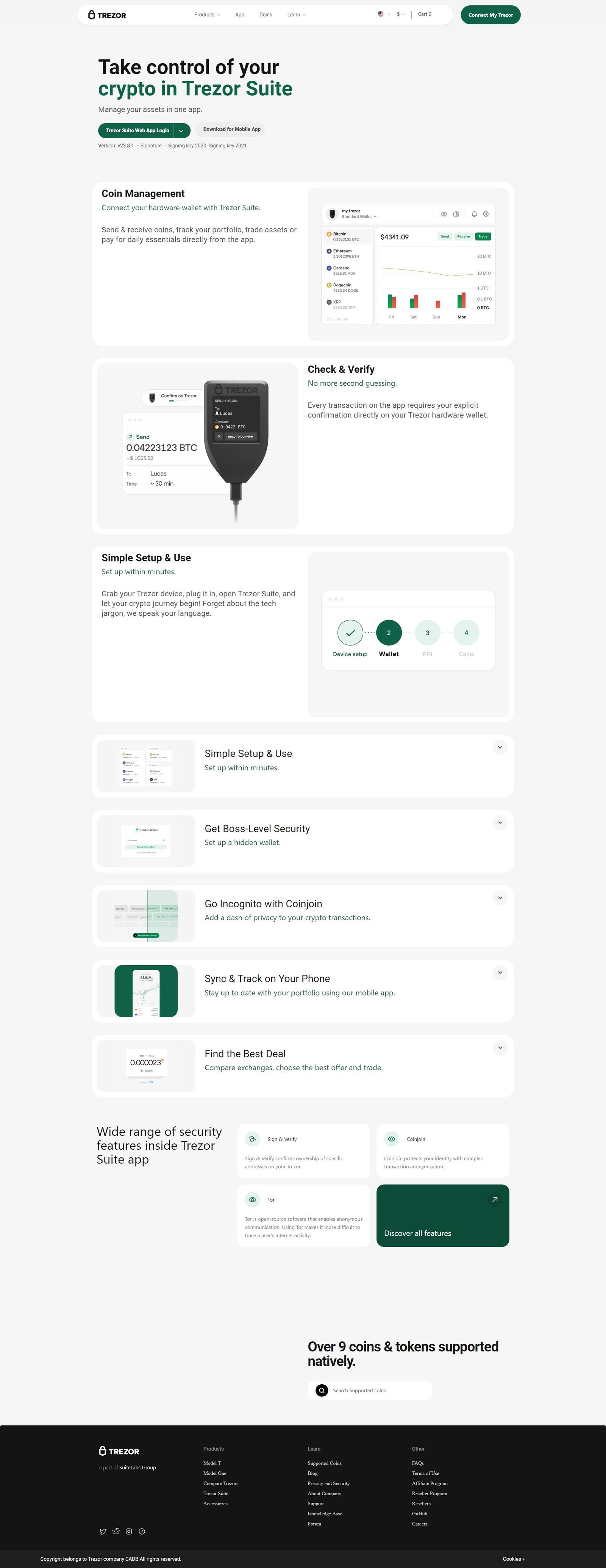Trezor.io/start: Your Ultimate Guide to Secure Cryptocurrency Storage 🔐
In the ever-evolving world of cryptocurrencies, security remains a top priority for every investor and trader. If you are looking to safeguard your digital assets, Trezor.io/start is the gateway to one of the most trusted hardware wallets on the market today. This blog post will walk you through everything you need to know about starting with Trezor, explore some advanced uses, discuss common issues, provide a quick guide on Ledger as an alternative, and conclude with some final thoughts. 🚀
What is Trezor.io/start? 🌐
Trezor.io/start is the official onboarding URL for the Trezor hardware wallet, a device designed to securely store your cryptocurrency private keys offline. This eliminates the risk of hacks and malware that plague software wallets or exchanges. When you visit this URL, it guides you step-by-step through setting up your device, initializing your wallet, and managing your crypto assets safely.
How to Get Started with Trezor: Step-by-Step Guide 🛠️
- Purchase Your Trezor Device Always buy directly from Trezor.io or authorized resellers to avoid counterfeit products.
- Go to Trezor.io/start Connect your device to your computer and visit Trezor.io/start to initiate the setup process.
- Install Trezor Bridge This software enables communication between your hardware wallet and the web interface.
- Create a New Wallet Follow the on-screen prompts to generate a unique recovery seed—a set of 12-24 words essential for wallet recovery.
- Set a PIN Protect your device with a PIN code to prevent unauthorized access.
- Start Managing Your Cryptos Use the Trezor web wallet to send, receive, and monitor your cryptocurrency holdings safely.
Advanced Uses and Common Issues ⚙️
Advanced Uses
- Multi-Currency Support: Trezor supports over 1,000 cryptocurrencies, making it versatile for users holding diversified portfolios.
- Integration with Third-Party Apps: You can connect your Trezor wallet to apps like MetaMask or MyEtherWallet for advanced DeFi interactions.
- Passphrase Protection: Adds an extra layer of security by requiring a secret word alongside your seed phrase.
- Multisig Wallets: Enables setting up multi-signature wallets requiring multiple approvals for transactions, perfect for businesses or shared accounts.
Common Issues and Fixes
- Device Not Recognized: Make sure Trezor Bridge is correctly installed and your USB cable is working.
- Forgotten PIN: Use your recovery seed to reset the device but be cautious as losing the seed means losing access forever.
- Firmware Updates Failing: Ensure a stable internet connection and avoid interrupting the update process. If problems persist, restart your device and try again.
How to Guide: Using Ledger as an Alternative 🔄
Ledger is another popular hardware wallet brand. Here’s a quick comparison and how to start with Ledger if you want to explore alternatives:
- Visit Ledger Live: Go to Ledger Live to download their software.
- Initialize Ledger Device: Similar to Trezor, you will create a PIN and generate a recovery phrase.
- Manage Multiple Cryptos: Ledger also supports numerous cryptocurrencies and integrates with third-party apps.
- Security Features: Ledger uses a secure element chip to protect private keys, whereas Trezor relies on open-source software and hardware transparency.
Choosing between Trezor and Ledger depends on your preference for open-source transparency (Trezor) or hardware chip security (Ledger).
Final Thought 💡
Securing your cryptocurrency should never be an afterthought. Whether you choose Trezor.io/start or decide to explore Ledger, hardware wallets remain the gold standard for protecting your digital assets from theft and cyber-attacks. Trezor’s ease of use, multi-currency support, and advanced features make it a strong choice for beginners and experienced users alike.
Made in Typedream